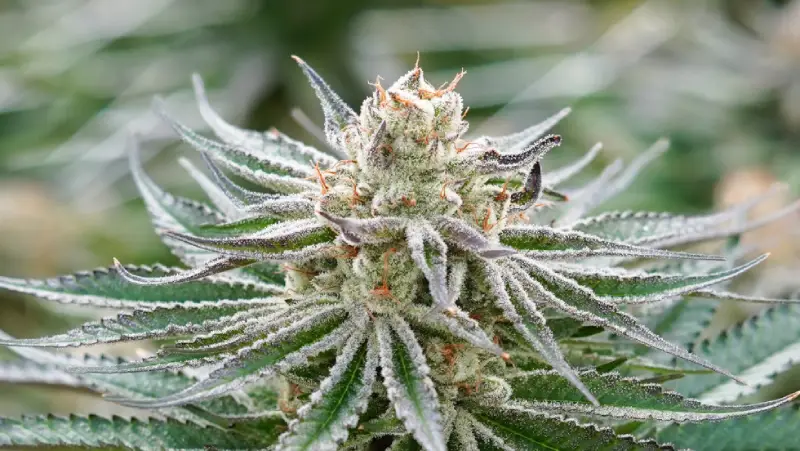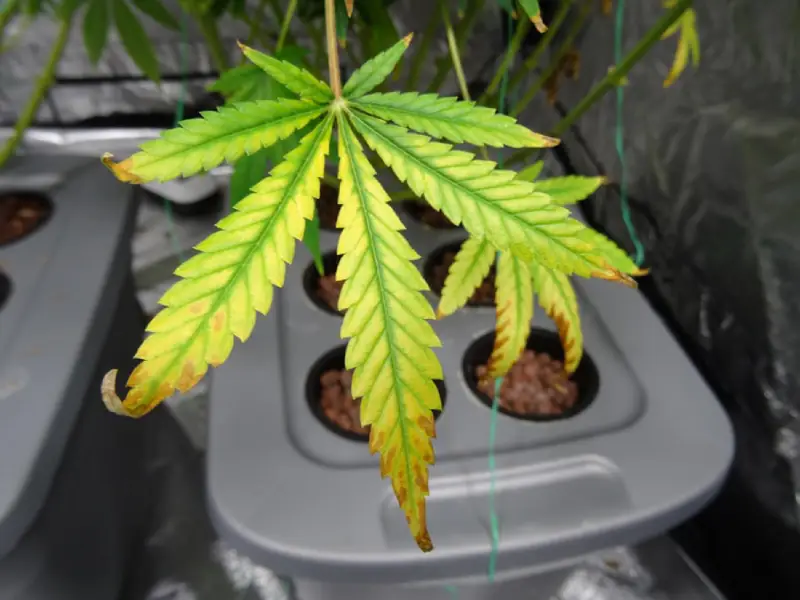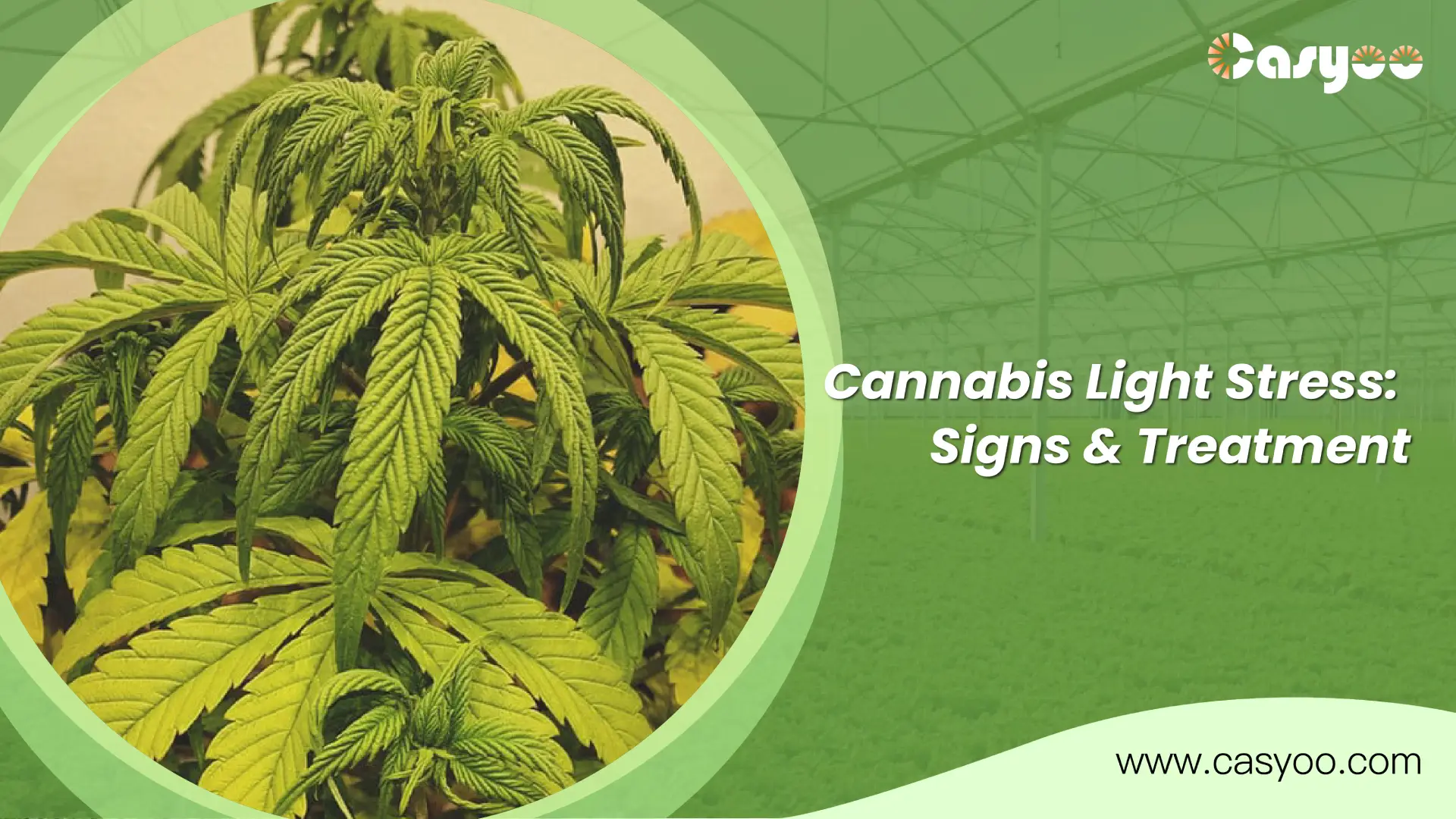Adequate lighting is essential for all stages of cannabis growth, but too much lighting is not good either, and your plants will suffer from light stress. When you notice signs of cannabis light stress, treat it right away.
What is light stress in plants?
As you probably know, plants need light to photosynthesize. However, when there is an excess of light, it can cause serious problems for your plants. Light stress can lead to a variety of symptoms, including discoloration, legginess, and increased susceptibility to disease.
What are the types of cannabis light stress?

There are two types of cannabis light stress: high light stress and low light stress. It’s crucial to understand the signs of both types of light stress and how to prevent or treat them before growing healthy cannabis.
High Light Stress
It’s not necessarily too much light that’s causing harm to your cannabis plants, it’s too much heat. When a plant suffers from high light stress, all the water the plant absorbs goes into cooling the plant tissue, and its leaves can look as if they’re burned or about to fall off. In most cases, the soil will also feel dry to the touch. High light stress indoors is often caused by artificial light sources too close to the crop.
Low light stress
It can cause symptoms such as poor leaf growth, yellowing and leaf drop, long stems, and dull green color. Low light stress plants will also frequently bend in the direction of the closest light source, such as a window. Low light level stress restricts photosynthetic activity, whereas excessive light stress damages the plant’s photosynthetic components.
What is the difference between light stress and light burn?
While light stress and light burn are closely related, cannabis plants exhibit distinct symptoms. In essence, not every light stress results in light burn, even though light burn is a type of light stress.
The term “light stress” describes a wider range of symptoms that plants display under less-than-ideal lighting circumstances, such as excessive or insufficient light. More precisely, light burn is the direct outcome of exposure to very high light levels or light sources nearby. This is similar to having a “sunburn” on your plant. The burned portion of the plant, which is typically the one next to the light, may become yellow or white and may have a crunchy texture.
What are the signs of cannabis light stress?

Although cannabis light stress is a significant issue that shouldn’t be ignored, if you are aware of its warning signals, it is fortunately simple to address. The following list includes typical signs of light stress in cannabis plants.
Fading buds
Buds that fade or become white are among the most noticeable signs of cannabis light stress. This happens when the buds are too close to a light source. Albino buds are another name for these buds, although this symptom should not be confused with other unusual bud hues. White buds won’t be as powerful, tasty, or aromatic as you might anticipate, in contrast to purple buds.
Not only does too much light stunt the development of the buds, but the heat from the lamps can also burn the cannabinoids and terpenes on the buds, making them almost unworthy of consumption, which is a sign that all your hard work has been in vain.
Yellowing leaves
Yellowing foliage is another indicator. Although a nitrogen shortage can also cause leaves to become yellow, light stress is likely the cause of this symptom also appears in conjunction with the other symptoms mentioned above.
The development of foliage on lower leaves first indicates a nitrogen deficit, which can be easily distinguished from light burn. The most common cause of yellowing leaves at the top of the canopy is light stress.
Stunted Growth
As was previously noted, cannabis plants’ ability to photosynthesize can be severely harmed by excessive light. During this time, the leaves will lose water, wilt, and lose color. Additionally, because the leaves lack water, the chlorophyll becomes damaged and cannot photosynthesize. This slows down the development of the plant, leading to stunted growth. If this problem is not addressed promptly, your plant may stop growing completely or even die.
Stretching
Another common symptom of light stress is stretching. Stretching its body to reach the light source when there is insufficient light for the plant weakens, delays development, and even increases the plant’s susceptibility to falling over.
Inconsistent Crown Growth
Inconsistent crown growth is a symptom where one part of the canopy receives more light than other parts. This causes the parts that receive the most light to grow densely while the rest of the cannabis plant grows sparsely. At this point, the parts that receive less light will produce poorer buds, which is not ideal.
How to deal with light stress in plants?

Dealing with high light stress
Move the plant to a cooler spot: If the plant is getting too much light, relocate it to a spot where the light isn’t as strong or cover it with curtains or shade cloth.
Reduce light intensity: You can lessen the amount of light the plant is getting from the grow lights by relocating them farther away, dimming them, or switching to lower-wattage bulbs.
Increase humidity: Increasing the humidity around a plant can assist relieve stress because high light intensities cause evaporation to increase and the plant to become drier. To raise humidity, you can use a humidifier or put a dish of water close to the plant.
Prune damaged leaves: If the plant exhibits indications of mild stress, remove any impaired leaves to avert additional harm and enable the plant to focus its energies on robust development.
Dealing with low light stress
Move plants to a brighter spot: If you don’t already have grow lights installed, consider installing them. While it may be tempting to place your plants in front of a windowsill, the reality is that without artificial lighting, plants will grow more slowly and succumb to overwatering more easily. If you are already using grow lights and find that our plants are struggling with low light stress, move the lights closer to the plants. You can also upgrade your lighting system to one that provides more adequate light for the type of plants you are growing.
Adjust light duration: If the light schedule isn’t giving your plants enough during the day, try adjusting it or using grow lights to increase the light’s duration. However, since plants have their own rhythms and altering them will lead to additional issues, we do not advise using this strategy to address light stress.
Adequate spacing: While you may think it doesn’t have much of an effect on the amount of light your plants receive, the fact is that closer spacing between plants will reduce vegetative growth and fruit size because more shadows hinder the plant’s chances of getting light.
Fertilization: Fertilize your plants with a balanced fertilizer that gives them the nutrients they require to flourish if they are suffering from low light stress as a result of nutrient deficits.
Prune your cannabis to improve air circulation: Prune your cannabis plants to promote bushier growth and better air circulation around the plants if they are growing lanky as a result of low light levels.
Final Thoughts
You should never give up on your cannabis plants just because they show signs of stress; like with anything else, it takes practice to become an expert. Remedy it by following the tips we gave you above. To prevent light stress in the future, consider purchasing the best LED grow lights at Casyoo. We have all the equipment you need to help your plants grow well without subjecting them to unnecessary light stress.




